August 22nd, 2007 – Carolina writes: The road to Xanica climbs up from Huatulco through a beautiful forest. It’s rough and unpaved, but the driver of our wooden-railed pick-up knows all the ruts and curves, even in the rain. He’s lived there all his life. His name is Isaías.
He talks to the two of us, who were lucky enough to be riding up front, about the woods and the deer and possums and armadillos that live there. Then he says, “See those lights? They’re the lights of Xanica.” On our two-hour ride they look really distant, then closer, then even further away, but there they are, shining clearly through the mist, always visible in this part of the Sierra Sur of Oaxaca. Isaías answers our questions and tells about the state of siege in his town.
Only later did I learn that he’s one of eight people from Xanica with warrants out for his arrest.
When we get to the Zapoteco town of Santiago Xanica, the folks from the Committee for the Defense of Indigenous Rights (CODEDI) welcome our caravan with the arc of a sky rocket, a brass band, warm words, hot coffee, bowls full of steaming tamales made with chepil leaves, and a dance.
CODEDI-Xanica is part of the alliance known as the Popular Anti-neoliberal Oaxacan Magonista Coordinating Body (COMPA), adherent to the Other Campaign, and one of the founders of the Popular Assembly of the Peoples of Oaxaca (APPO). It is also part of the Magonista-Zapotista Alliance (AMZ) together with the Indian Organizations for Human Rights in Oaxaca (OIDHO) and the Autonomous Magonista Collective (CAMA)––the organizers of our caravan of solidarity with this community that has resisted an extremely high level of repression during the last decade.
Around 45 people, including visitors from Italy and Spain, left Mexico City on August 5 and got back on the 9th. We stayed at the OIDHO center in Atzompa on the way, where we talked for a while with their members about the threat to local autonomy from all the major political parties in the upcoming elections.
We also stopped at the prison in Pochutla so that ten people could visit Abraham Ramírez Vázquez and the brothers Juventino and Noel García Cruz, the first political prisoners of Ulises Ruiz Ortiz’s regime. They were all shot, then arrested, after the state police opened fire on CODEDI members on January 15, 2005. The three are still in jail on false charges of homicide, attempted homicide, and kidnapping. The eight people with arrest warrants have the same generic charges.
In Xanica, the doctors of the Salud Autogestiva collective treated patients, the Hormiga Libertaria collective presented handmade books to the community, and we participated in several workshops ranging from theater to sexuality, reproductive health, puppets, children’s games, artwork from recycled paper, and human rights.
In the human rights workshop and subsequent conversations, Abel Ramírez Vázquez (Abraham’s brother) gave us a historical overview of the current crisis, and at least 15 Xanica residents told us of abuses that the government has committed against CODEDI simply because they have defended their indigenous rights and autonomy.
Abel said:
“We have experienced the violation of our indigenous rights both collectively and individually. Your life changes when your rights are violated…. We try to conserve our cultures, but the super-rich force another way of life on us. They impose ideas on us through the mass media that are totally alien to our reality. Then some people are tempted to live like the people on TV live, but it’s not our thing. We’re never going to be like them. They’re inflicting a kind of death on us. They kill what we are and another way of life is born. The government tells us not to worry, that it’s normal, but it’s hurting us….
…Meanwhile, they’re robbing the water from our rivers like the Copalito. They never asked our permission. We’re the ones who’ve taken care of the forest. They’re doing away with the ecosystem. There are people who are dying because they don’t have water to drink, but the water is for the luxury hotels in Huatulco. The Plan Puebla-Panamá opens up the Huatulco tourist corridor, and the money goes to the rich while the rest of the people fall deeper into poverty.”
Private property and the market
According to Abel, many of today’s problems can be traced back to the 19th century. He says that communal property, “which is the most important thing for indigenous people,” was fenced off before 1900. Many people who only spoke the Zapotec language didn’t find out about the laws setting up the new private property regime, and consequently, their lands were stolen from them. They were left with only a small patch of land or no land at all.
Abel explained that around 1930, many farmers began to grow coffee, and by the 40s and 50s they had stopped growing corn, beans, and chili—just coffee. There were two big plantations near Xanica: Alemania and San Pablo, both of which had company stores that kept the laborers permanently indebted.
Since then, jobs in the area have mainly depended on the international price of coffee. When the price went down from 1980 to 1990, a lot of plantations were abandoned, which was a heavy blow for people who didn’t have land of their own for growing coffee: they had nowhere to work. Some started growing corn, bean, and chili again. When prices rise, there’s a lot of work in the coffee picking season from November to January, but it’s badly paid. Maybe they’ll pay a farm worker 300 pesos (? $27 USD) to work 15 days cleaning the coffee field.
In other cases, they may pay as much as 80 pesos (? $7.20 USD) a day, from 7:00 in the morning until 5:00 or 6:00 in the afternoon, depending on the boss. It takes the farm workers two hours to walk to work and two hours to get home and then they have to carry wood. They don’t even have a burro (donkey); they carry it on their backs.
Since the Free Trade Agreement was signed, coffee prices have gone down even more. Now there’s hardly any work. Ever since the 1990s the emigration from Xanica has been heavy.
Rebellion in Xanica in the 50s
In keeping with the rebelliousness of the Zapotecos against the lords of Monte Albán, their battles under the command of José María Morelos and Vicente Guerrero, their resistance against the French, their enlistment in the ranks of Emiliano Zapata’s army, the town of Xanica rose up in the 1950s.
Abel tells us that “there were problems much like the ones we have now.” People came from Miahuatlán to sell clothing and bread, and they also set up big butcher shops. They wanted the people of Xanica to work for them, and they also wanted to establish their own local authorities. They refused to respect the community assembly, the council of elders, and the traditional practices and customs for choosing public servants.
The people of Xanica, unwilling to accept this domination, rose up in arms. The army soon came in and there were deaths on both sides. “Some of the local people went to jail because they killed a soldier. The army was in the area for three months looking for the rebels, who hid in the mountains. The army finally left and people either returned or kept on hiding out.”
“But we paid a price,” Abel says. “A lot of children died and houses were burned. It was a small war that jeopardized our traditional practices and customs.”
The current conflict shapes up
Gildardo García tells us that the current conflict in Xanica began ten years ago. “Up until 1998, we chose our town president according to our usos y costumbres, or traditional practices and customs. Whether or not a person was elected depended on his or her record of community service and other requirements for holding office. A potential official would be evaluated by the townspeople.”
In June of 1998, the method of choosing officials according to traditional practices and customs in a general assembly in indigenous communities, with no interference from the political parties, was legalized in a constitutional reform in the state of Oaxaca.
Nevertheless, according to one of the coordinators of CODEDI, César Luis Díaz, this reform coincided with the arrival of all the major political parties, “offering people positions and cash,” which was very attractive to some people. “Really though,” says César, “there’s even less respect for indigenous rights in Oaxaca now than there was before.”
Abel Ramírez Vázquez adds that the governor promoted the reform to “clean his dirty conscience.” Really though, says Abel, “they refuse to let us develop our culture, our language, our collective form of work. This is directly opposed to our way of life, our autonomy. International law doesn’t allow them to disappear an entire people.”
In 1998, the election of Alejandro Díaz Ramírez by traditional practices and customs in Xanica was contested, and the PRI party’s Juan Cruz López was imposed as municipal president. In response, the people took over the municipal building and set up a popular government with majority support from the townspeople. Almost instantly, both state police forces and army units arrived to besiege the legitimate town government.
CODEDI was founded in this situation of extreme tension to fight against indigenous rights violations. Through constant pressure, the organization got Cruz López to resign, and Alejandro Díaz Ramírez was elected in the community assembly in 2001.
For three years, Xanica made advances in self-government. The CODEDI coordinators Abraham Ramírez Vázquez, César Luís Díaz, and Froylan González Cruz initiated projects to open a pharmacy, library, and computer center. They also started a housing project and got funds to build 60 houses. Up to that time, townspeople lived in huts made of reeds or tin. Abel Ramírez says, “We tried to reinforce collectivity, working together to build the houses. Everyone unloaded the building materials and went to work. In 2004, we were almost finished.”
In August of 2004, however, another abuse was committed against us. Sergio García Cruz violated the system of traditional practices and customs and took over the presidency, supported by the PRI, PAN, PRD and some of the religious leaders. The ministerial police came in to protect him.
The tension mounted during the first days of 2005. At the first of January, CODEDI made the decision not to participate in the community service projects known as tequio convened by the illegitimate president. On January 2, army trucks arrived, supposedly looking for (non-existent) marihuana and poppy fields.
January 15, 2005
According to the testimony of a number of different people, about 10 o’clock in the morning, 80 men and women, young and old, were engaged in a tequio project convened by CODEDI, unloading bricks from a truck. A patrol truck pulled up about 11 o’clock, and Commander Cipriano Hernández García of the state police arrogantly ordered them to get the truck off the road. His tone of voice was threatening. Several people told him that they would only take a few minutes to finish up, but he radioed to another patrol truck that people were blocking the roadway and wouldn’t let him go by. He called for reinforcements, and when he gave the order, they got ready to fire. Abraham Ramírez stepped forward and tried to talk to the Commander, who put his gun to his stomach. When Abraham pushed the rifle downwards, the officer shot him in the leg. At that point, the police opened fire, wounding two youth, Noel y Juventino García Cruz. The municipal president Sergio Cruz García also participated in the attack along with several armed civilians.
According to Abraham’s mother, Ángela Vázquez García, “They didn’t think twice about shooting him. Abraham went down immediately. Bullets were flying from all directions. We came running down from our house up on the hill, and when we got to the church, bullets from all sides were falling around our feet. There was crossfire.”
According to Gildardo García, the townspeople defended themselves with bricks and stones, and after about twenty minutes forced the police to retreat. They then took the wounded men to the clinic, where they were given serum and a few pills. The clinic didn’t have the medicine that Abraham needed for his more serious wound, however. It was impossible to take them to the hospital because by this time the entrance to the town was blocked by the police.
Carolina Cruz Garcías says that it was late at night before the three left for the Health Center in Pochutla in a Red Cross ambulance, accompanied by Alejandro Díaz Cruz and escorted by more than twenty patrol trucks. When they got to the Río Copalito, there were many more policemen, supposedly investigating the death of a policeman. They stopped the ambulance and demanded that the three wounded men get out, but the medic said it was impossible and refused to allow a search. Even so, the police pulled Alejandro Díaz Cruz out of the ambulance and threw him into a patrol truck. They asked him the names of the men in the ambulance and beat him savagely when he refused to reply, prompting the three men to identify themselves. Upon hearing the name Abraham Vázquez Ramírez, the commanding officer said, “Oh, so you’re the head honcho. Well, you’re really fucked now.” The police accused the three of killing the officer, who, in fact, was killed by “friendly fire” from his own men during the shooting. The ambulance took a long time to get to Pochutla due to the leisurely pace of the escorts, and, as a result the men received no medical attention for 36 hours. The police took Alejandro Díaz Cruz with them in their patrol truck, interrogating and torturing him on the way.
In the hospital
Abel Ramírez says that at the Health Center in Pochutla, the doctors intended to cut off Abraham’s leg, saying that there was no remedy for his bullet wound. A call went out, however, and successful mobilizations by the COMPA prevented the amputation.
Later, the three were transferred to the General Hospital in the city of Oaxaca, Abraham in a small plane and the other two in an ambulance. Upon arrival, 400-500 supportive people were on hand to receive him, as well as several hundred police. Abraham Ramírez Vázquez had surgery, and immediately afterwards was chained to his bed. In the hospital he was always under police guard.
His wife, Graciela Merced Cruz, was forbidden to visit him for three months. The visits of other family members were prohibited at times or permitted only during the daytime with many obstacles. According to Celerino Jaime Martínez López, “They wouldn’t let us spend the night with him in the General Hospital in Oaxaca. He needed help to get up and go to the bathroom in the night, but there was nobody there to help him.”
Carolina Cruz says that family members were not permitted to bring badly needed crutches into the hospital. She adds that on another occasion, Abraham Ramírez borrowed a cell phone from Isaías Martínez López and made a call to the National Commission on Human Rights. When the police guards found out, they beat Isaías vindictively.
For several weeks, Abraham, Noel and Juventino were chained to their beds and threatened by their police guards. They were then taken to the Santa Maria Ixcotel Prison in the city of Oaxaca. Galdino Castro Hernández says that “at Ixcotel they didn’t take Abraham in on a stretcher; he had to walk in at gunpoint. He didn’t receive medical attention there and visits were prohibited.”
Mobilizations
The mobilizations called by the COMPA began in the city of Oaxaca, where people camped out to demand justice and freedom for the three men from Xanica. On Friday night, January 21, 2005, three hundred people from the “caravan of women, girls, and boys against injustice and oblivion” got to the Zocalo in Mexico City, where they stayed for three months. En route, Bertín García Cruz was arrested and jailed for two days.
On February 3, the president of the National Commission on Human Rights (CNDH) invited COMPA members in the city of Oaxaca to a meeting to discuss the abuses with the new governor Ulises Ruiz, but the meeting became a trap in which Alejandro Cruz López of the OIDHO was arrested.
State of siege
About two hours after the shooting on January 15, 2005, approximately 300 policemen arrived in Xanica, where they stayed for six months. They searched and interrogated local people and also searched their houses.
Celerino Jaime Martínez López reports that “we were all under surveillance, kidnapped, besieged. There was a cordon around our simple, wooden houses. They not only surrounded the houses, but also followed people around. The dogs barked when the police came right up to the houses. The policemen pointed their guns at us.”
According to Ángela Vázquez García, “The police in Xanica told us we couldn’t walk around, but we have the right to do that. We keep on walking around no matter what they said.”
Angelina Gerónimo García tells us that she was there when they shot Abraham and when people took him to the clinic:
“I left the door of my house open. When I got back, the police were in my kitchen, cooking. They had used my tablecloth to wipe themselves after using the bathroom. They took several of my pots and placemats and 50 pesos (? $4.50 USD) I had saved. I couldn’t do anything about it. They also went into my daughter’s house. She found one of them asleep on her kitchen table. They cut off her electricity and she hasn’t had light for three years. Some of the women who used to be in our organization joined up with Sergio [García Cruz], and they all have light. He’s the municipal president and he used to work with us, but he went for the big money. He used to say he was against the police, but now he always goes around with a police escort.”
Abel Ramírez Vázquez says that the police were digging trenches for 15 days, looking for arms. They wanted to terrorize people. The Special Ops forces known as the UPOE were there, too. Gildardo García Martínez adds: “The children couldn’t leave the house without the police pointing their guns at them just like they were animals.”
For six months, according to Froylan González Cruz, both police and army patrols held people at gunpoint and searched them when they walked to work between 6 and 8 o’clock in the morning. They knocked their machetes out of their hands and made it impossible for them to work. They asked: Why are you leaving home so early? Why are you walking by here? Why do you get home so late? Who did you go to see? Where? “We don’t have a fixed schedule,” says Froylan. “Only people under orders from the government live that way. They asked people for identification but the compañeros resisted. They know their rights. There’s strong resistance here.”
There aren’t so many police units in Xanica now, but there are permanent agents guarding the town hall. On the other hand, there’s an increase in army checkpoints between Xanica and Huatulco. According to Froylan, the soldiers set up their check points every two weeks. They may stay 15 or 20 days, searching and questioning people. Ángela Vázquez García says that the last time she and her grandchildren visited the prisoners in Pochutla, the army searched them.
Torture, arrests, threats, and harassment
Looia Esther Morales Acevedo has this to say: “When Marcos was on his way here with the Other Campaign, Sergio Ramírez Vazquez, César Luiz Díaz, and Leoncio Cruz went out to put up posters. When the police tried to stop Sergio, he answered, ‘I live here. I have the right to do it.’ They beat the men on the way to the jail and charged them falsely with hitting a policeman.” Looia says that she saw the police stomping on her husband Sergio and called out, “Don’t you treat him that way!”
Sergio Ramírez Vázquez (Abraham’s brother) says that the police tortured him and tried to hang César Luís Díaz. They held them for several hours and beat them. Sergio says, “They hung me up with my arms chained to the railing on the church for three hours. Then they took out a club from somewhere and wrote in my file that I had tried to kill a policeman with a club.”
Sergio affirms that Alejandro Díaz Cruz was tortured with plastic bags placed on his head and that he was falsely charged with the sale of cocaine.
The police were trying to hang César Luís Díaz; as a matter of fact, they had the rope around his neck, when around 25 women and children rescued him. How did they do it? “They were furious when they rushed into the jail,” says César. “There was a lot of pushing and pulling, and they just grabbed hold of me and pulled me out of the policemen’s hands. There’s nothing weak about the women of Xanica; they’re really courageous.”
Since then, César has received anonymous threats in the form of letters tucked under the door of his house. On June 18, 2007, he was arrested and charged with homicide, attempted homicide, resisting arrest, threatening an officer, and possession of arms. He was tortured and a gun was planted on him. The charges of homicide and attempted homicide are in connection with the police killed on January 15, 2005. The more serious charges were dropped, César believes, due to the support he received from the Oaxacan teachers, the APPO, and people in other parts of Mexico and the world. He is now out on bail for the lesser charges.
María Carolina Cruz García is another person who is extremely vulnerable. She has received several threats by e-mail and has been identified and followed by plainclothes policemen in Huatulco, who called her name, “Caro,” four times. The following day, a member of the OIDHO went to visit someone in the Ixcotel prison, and the police seem to have confused her with Carolina. They said, “You’re Carolina from Xanica. You like the APPO marches. You went to visit Abraham, Noel, and Juventino. You’re Caro”. She said, “No, I’m not.”
Someone else found a file on the internet with photos of Carolina taken a year ago at the marches in the city of Oaxaca, and others from the encampment, cooking, talking to other people. The file is labeled “the radical of the APPO. CODEDI”.
Carolina Cruz says that she was in the room when they arrested Alejandro Cruz López at gunpoint. She said to the policeman: “Don’t mistreat our compañero”. “You shut up,” he replied, with his gun to her head.
There are also arrest warrants out for the following people: Froylan González Cruz, Gildardo García Martínez, Apolinar García Cruz, Alejandro Díaz Cruz, Aurora García Cruz, Sergio Ramírez Vásquez, Isaías Martínez López and Antonio Martínez López. They all have the same charges stemming from the events of January 15, 2005, even though it is well known that the policeman was killed by his own fellow officers the day of the shooting. It is believed that the charges may be an effort to intimidate and blackmail people so that they will stop their activism, but people are also aware that the danger is real, especially on the eve of the municipal elections of August 26.
Continued abuse of political prisoners
When Abraham Ramírex Vázquez, Noel García Cruz, and Juventino Cruz were in Ixcotel, the guards threatened to lynch them. Telésfora Cruz Crua, the mother of Juventino and Noel, says that the threats and punishments are ongoing at the jail in Pochutla where they are now being held.
Abraham’s mother, Ángela Vázquez García, says that they punish her son because he always defends his rights and speaks up for the other prisoners. “When there’s an abuse, he always denounces it. They shot him and arrested him because he speaks out, and that’s why they’re punishing him now.”
According to Carolina Cruz, the warden is always telling the other prisoners that Abraham, Juventino, and Noel are bad people, that they’re nothing but killers. She says the warden paid another prisoner to beat Abraham up. “Abraham had protested because they were selling cooking oil at 20 pesos (? $1.80 USD) a liter at the prison when the going price is 12 pesos (? $1 USD). A lot of prisoners can’t even cover their basic expenses. Before Abraham began to write up every abuse, the human rights groups had never showed up at the prison. The warden hates him. When a lot of people visit him, they know he’s not alone.”
Cristobal, Abraham’s 10-year old son, says that the guards recently grabbed his dad in front of him and his younger brothers and took him upstairs.
Abraham’s wife, Graciela Merced Cruz, adds:
“They took Abraham up to the punishment cell. They’ve got 11 people packed into a little room that measures 3 by 3 meters. They didn’t give us any explanation, and they wouldn’t let me see the warden. It was nighttime and I had the children with me. I asked them, “Where else can we go? I’m staying right here.” They didn’t let me see him until early the next morning. An officer came down and said, “Your husband is really pissed off.” He offered to give me a special place to sleep, but I said no, that I’d stay in the kitchen. They gave Abraham three days of punishment.”
Cristobal had more to say:
“On January 15, they threatened my dad. They said, “You’re a guerrilla and you’re going to die.” They had him in chains in the hospital. We couldn’t take him anything. I felt really sad. He demands people’s rights. They said on the radio that we had AR15s, but they’re lying. It’s a pretext for keeping my dad in jail for the rest of his life.”
Last year on June 14, I was at the encampment in the city of Oaxaca with my little brother. We had to run. There was a lot of tear gas and some people fell down. We ducked into a school. They hurt César’s little boy when they forced us to get out of there, pointing guns at our heads and shooting tear gas. They threw us down on the floor and beat us.
The teachers are afraid to come to Xanica, but we’re going to defend them. We really love our teachers.
Saying goodbye
In the human rights workshop, we agreed to spread the word about what we had heard there and to encourage human rights organizations to send observers to the municipal elections on August 26 to allay possible fraud and repression.
After the women of Xanica displayed their brightly colored weaving, there were messages of thanks and commitment. It was time to say goodbye, but the people wouldn’t let us go without giving each person in the caravan a beautiful weaving, painting, or carved object. Their generosity knows no limit, nor does their impressive organization and spirit of struggle.
And, oh yes, we saw the lights of Xanica up close. The smiles of the children and their voices, lifting our spirits with poems, songs, and chants as we walked to the bus:
If we get out in the streets ¡Yes, that’s right!
to struggle for the people ¡Yes, that’s right!
we’ll bring about the change ¡Yes, that’s right!
that the people are demanding. ¡Yes, that’s right!
As the Comandante said ¡Yes, that’s right!
Comandante Che Guevara ¡Yes, that’s right!
and Genaro Vázquez, too, ¡Yes, that’s right!
Ever on towards victory ¡Yes, that’s right!
and fuck the government, too. ¡Yes, that’s right!
—
More information:
» Communiqué: “no more injustices against the people”
» Cesar Luis Días arrested without warrant in Xanica
» Video: Santiago Xanica: Six Years of Struggle and Resistance
» Governor Ulises Ruiz; 6 months of harvesting terror in Oaxaca
» Oaxacan Activist Released: The Campaign Continues
» State Repression and Indigenous Resistance in Oaxaca
» Alianza Magonista Zapatista (AMZ)
» Coordinación Oaxaca Magonista Popular Antineoliberal (COMPA)
» Organizaciones Indias por los Derechos Humanos en Oaxaca (OIDHO)

photo by Ricardo García
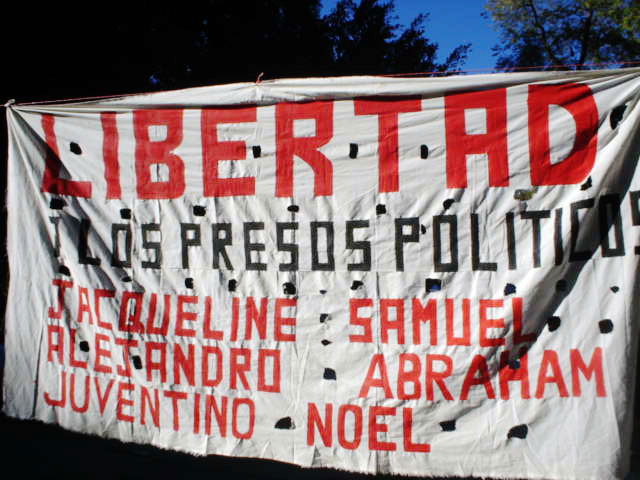
Camino a Xanica

fotógrafo: Ricardo García
caravana mujeres y niños indígenas
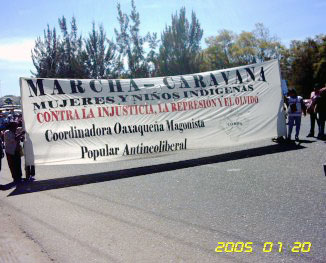
niños
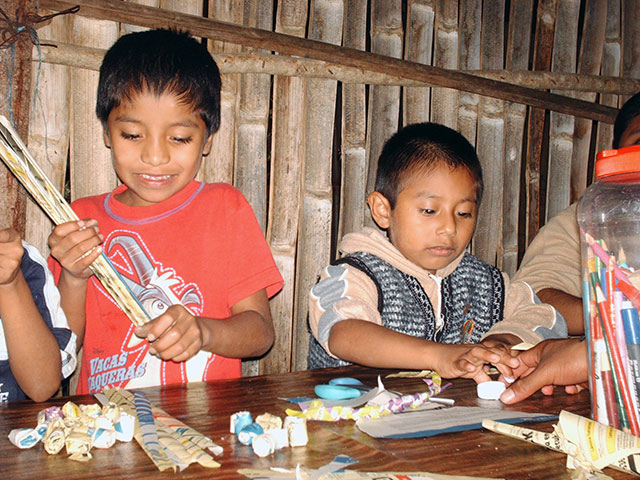
fotógrafo: Ricardo García
women with their embroidery
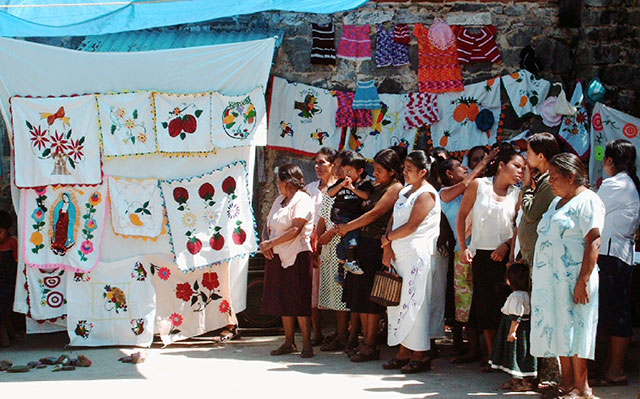
fotógrafo: Ricardo García
mountains

fotógrafo: Ricardo García
niñas de Xanica con piedras pintadas
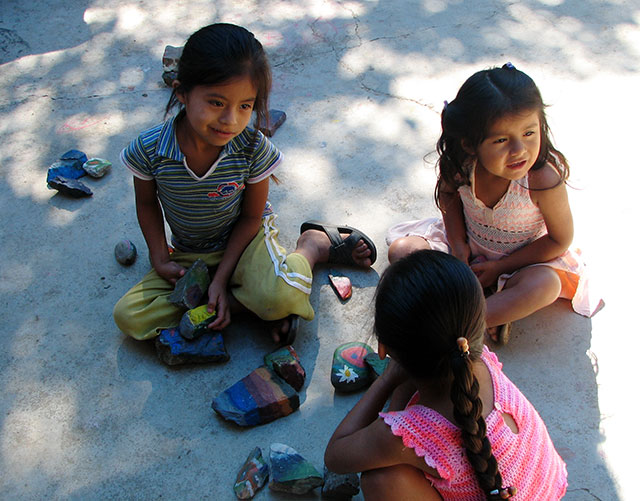
fotógrafo: Gerardo
town
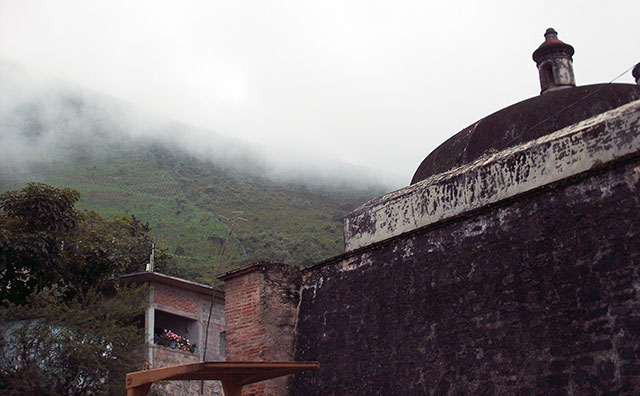
fotógrafo: Ricardo García
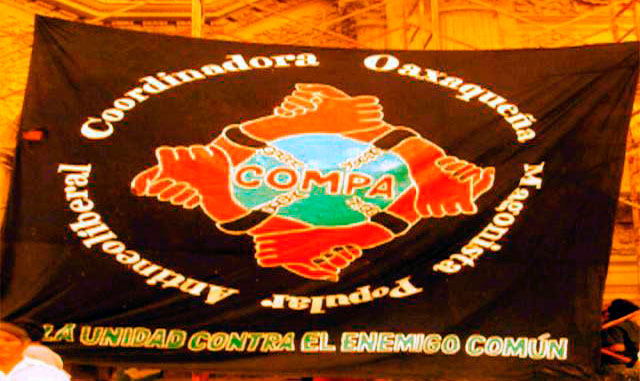


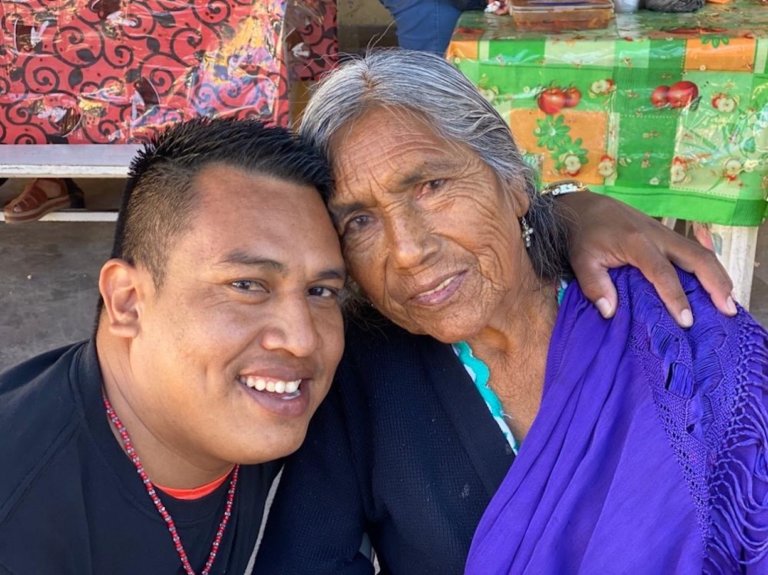
nice page
Viva La Revolucion
Estoy sin palabras…muchas, muchas gracias por sacar esta informacion a la luz publica…vivan los Pueblos Indigenas de Mexico y del Mundo!
Preciosa y muy triste. Que puedo hacer yo?
Una narración conmovedora y a la vez alentadora… ¡qué ejemplo! Gracias por informarnos.
Es una vergüenza para los Mexicanos que estas cosas sigan ocurriendo en nuestro País; me da tristeza ver que seamos capaces de tratar así a nustros compatriotas, que se sigan violando tan impunemente los derechos básicos de los Indígenas.
Gracias por difunidir esta información.
¡ hasta la Victoria Siempre ¡ !Libertad a los Presos Políticos¡